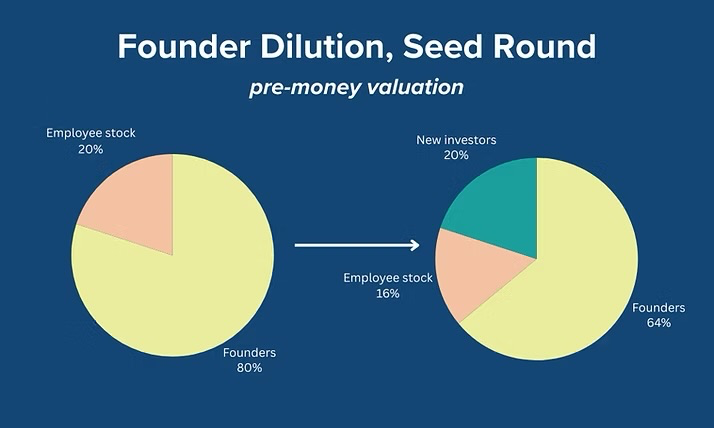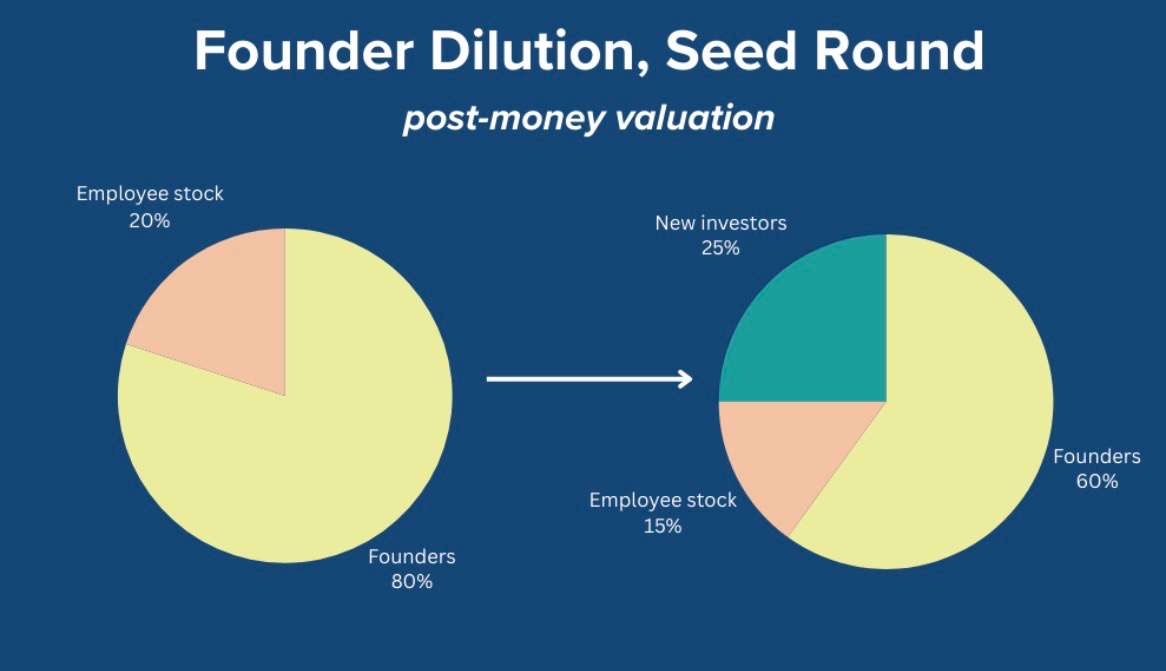Founder’s Control – Here’s How to Keep a Tight Hold on Your Startup and Why It Matters

When most founders look at a term sheet, their eyes go straight to the valuation, dilution, and how much money an investor is putting on the table. Those numbers feel exciting, and they are important. But what many overlook is that a term sheet is not just about money, it’s about control.
Buried in those pages are governance clauses that can determine whether you’ll continue steering your own company or whether, one day, you’ll find yourself sidelined. Losing control doesn’t usually happen overnight. It starts the moment you agree to investor-friendly terms that slowly shift power away from you.
This article explains what a founder's control is, why it matters, how it compares to investor control, and how to spot when a term sheet favors one side over the other.
What Founder’s Control Really Means
Founder’s control is the ability to keep meaningful influence over your company even as investors come onboard. It’s not just about how much equity you own. In fact, many founders discover too late that having 51% equity doesn’t guarantee control. As venture capitalist Guy Kawasaki once said, “Owning 51% gives founders an illusion of control.”
True control comes from the rights and structures built into your agreements: voting rights, board seats, and protective provisions. If those are in your favor, you can shape the company even with less equity. If they’re not, you might end up with plenty of shares but no say in big decisions.
Why does this matter so much? Because founders usually think long-term. Investors, however, are often driven by financial returns within 5 – 10 years. Without safeguards, you could be forced into selling too early, pivoting into something that doesn’t align with your mission, or even stepping aside as CEO.
And the numbers prove just how high the stakes are. A Harvard Business Law Review study of 652 venture-backed IPOs found that only about 6.2% of founders were still CEOs by the time their companies went public. Three years later, just 3.3% still held voting control. In short: if you don’t actively protect your role, the odds are against you.
Founder’s Control vs. Investor’s Control
When investors join, they naturally want some safeguards. They’re risking capital and want to protect it. That’s where investor control comes in - through board seats, veto rights, and other clauses that give them a say in key decisions.
Founder’s control and investor’s control exist in constant tension. The question isn’t whether investors should have a voice, they should. The real question is: how much?
Visualizing Control
To make this clearer, here’s a snapshot of how control typically splits in an early-stage term sheet:


In other words, the balance of power isn’t just about equity percentages. The legal and governance terms can swing control decisively toward investors if you’re not careful.
Founder-Friendly vs. Investor-Friendly Term Sheet
Founder-Friendly
A founder-friendly term sheet gives you enough room to run the company without unnecessary interference. You’ll usually see:
- Balanced boards (e.g., 2 founder seats, 2 investor seats, and 1 independent seat both sides agree on).
- Super-voting shares for founders — where each founder share carries 10 votes while investor shares carry 1.
- Limited protective provisions that apply only to major events like selling the company or issuing new shares.
- Fair vesting terms that prevent founders from losing equity unfairly in disputes or exits.
When you see these terms, you know investors trust you to run the company while still protecting their money.
Investor-Friendly
An investor-friendly sheet tilts power toward the investors. Watch out for:
- Boards where investors hold the majority, leaving you outnumbered.
- Protective provisions that require investor approval for basic operations like hiring executives, approving budgets, or signing partnerships.
- Liquidation preferences stacked above 1× (like 2× or “participating preferred”), which can reduce your payout even in successful exits.
- Aggressive anti-dilution clauses that punish you if you raise money at a lower valuation later.
- Absence of super-voting rights, making it easy for the board to replace you.
As startup lawyer James Crowley points out, founders often make the mistake of focusing on valuation while glossing over these governance clauses, only to regret it when it’s too late.
What’s the Best Kind of Control for Founders?
Dual-class shares like those used at Google, Meta, and Snap, give founders shares with much stronger voting rights than investors. For example, Mark Zuckerberg’s shares carry 10 votes each. This lets him hold less than 15% of equity yet maintain majority control over Meta’s decisions.
Critics argue dual-class structures reduce accountability, but they undeniably protect vision. A compromise some companies use is a sunset clause, where super-voting rights expire after a certain time or event, such as an IPO.
For early-stage startups without that leverage, the next best option is negotiating equal board representation and keeping protective provisions narrowly defined. That way, you stay in charge of strategy while investors keep a say only in truly critical matters.
How Founders Can Protect Control
So, how do you actually keep control? The short answer: plan early and negotiate hard.
First, don’t obsess only over valuation. A slightly lower valuation with better governance terms is often a smarter trade-off than a sky-high valuation that costs you control.
Second, bring in legal counsel who knows venture capital inside and out. Investors write term sheets all the time, you don’t. Level the playing field by getting expert advice.
Third, secure founder board seats and, if possible, super-voting shares. These protections matter more long-term than a few extra points of equity.
Fourth, watch out for overly broad protective provisions. Investors should have veto power on big decisions like selling the company or raising more money, but they don’t need approval rights over who you hire as CFO.
Fifth, look ahead. Use cap table modeling to see how future dilution could chip away at your stake. Too many founders realize too late that each round pushes them further from control.
Finally, remember that credibility matters. Investors want to back strong leaders. Show that you’re willing to give fair protections, but not at the cost of your vision. As a Vanderbilt Law review observed, investors have recently become more founder-friendly precisely because bold, visionary founders are often the key to massive returns.
What the Data Tells Us
Control slipping away isn’t an exception, it’s the norm.
Founders typically give up 10 – 25% equity in seed rounds and 20 – 40% in Series A rounds, according to UpCounsel. As dilution stacks up, investors’ influence grows.
Research from Index Ventures shows how founder ownership shrinks over multiple rounds, while investors consolidate voting rights and control.
By the time of an IPO, the Harvard Business Law Review study found that fewer than 1 in 20 founders still held CEO roles. Without proactive steps to protect governance, founders almost always get sidelined.
Conclusion: Your Legacy Depends on Control
Raising money is thrilling. But don’t let the excitement blind you to what really matters: will you still be running your company in five years, or will you be an employee in a company you started?
The do’s and don’ts of a founder's control aren’t about being greedy or paranoid. They’re about protecting the vision that got you this far. The best founders understand that valuation is temporary, but governance is permanent.
When you sign a term sheet, remember: every clause either keeps you in the driver’s seat, or hands the wheel to someone else.
Read - Is the AI Bubble About to Burst? And What’s Next?

square.jpg)










